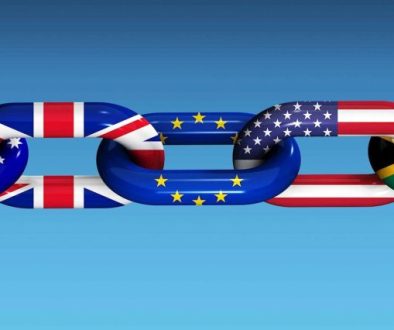The short-term economic outlook remains worrying worldwide, particularly for borrowers at the lower end of the credit scale or in the industries hit hardest by COVID-19 restrictions. But a large-scale debt crisis may not be nearly as likely as many fear.
As countries, companies, and households confront the COVID-19 pandemic’s economic fallout, many market watchers are sounding the alarm about rapidly rising leverage worldwide. And for good reason: in an acceleration of a years-long trend, the debt-to-GDP ratio among these three sets of borrowers is set to swell by 14% this year, to a record 265%. But while this has raised the risk of insolvencies and defaults, particularly among corporations, S&P Global Ratings believes a near-term debt crisis is unlikely.
Given the higher leverage and a challenging operating environment, S&P has downgraded the credit ratings of roughly one-fifth of corporate and sovereign debt issuers globally, especially speculative-grade borrowers and those suffering the most from COVID-19’s economic effects. For corporate borrowers, insolvency risks are likely to increase if cash flows and earnings do not return to pre-pandemic trend levels before extraordinary fiscal stimulus is withdrawn.
The world is likely to experience a gradual, albeit choppy, economic recovery, assuming that accommodative financing conditions are maintained, in a lower for longer environment, and adjustments to spending and borrowing behavior are made. Add to that a widely available COVID-19 vaccine by mid-2021, and global leverage should flatten out around 2023, with governments scaling back stimulus, firms slowly repairing their balance sheets, and households spending more conservatively.
But absolute debt levels are only part of the story. We must also – and more importantly – consider borrowers’ ability to repay. Today, unprecedented fiscal and monetary stimulus is keeping the liquidity tap open for firms through bond markets and bank loans. Borrowing costs are very favorable, and appear likely to remain so for a long time: we expect benchmark interest rates to remain historically low into 2023. Meanwhile, credit spreads have tightened from their March peak; as it stands, they are more sensitive to business-specific risks than market risks, particularly for the lowest-quality borrowers.
For the most part, the increased debt is intended to help create conditions for an economic recovery that improves borrowers’ future ability to repay. This is especially true for sovereigns, whose fiscal-stimulus measures aim to reduce the pandemic’s economic impact.
All sovereigns will emerge from the pandemic with a larger stock of debt. The most developed economies are likely to bear the largest share of increases. However, they are largely wealthy, with strong financial markets and substantial monetary flexibility, allowing them to sustain their overall creditworthiness thus far.
We assume that governments will reverse the trajectory of fiscal deficits as economies recover, stabilizing debt dynamics. So far, S&P has not lowered the ratings of any G7 country. Speculative-grade sovereigns are more vulnerable to downgrades, given their inherently weaker finances and higher susceptibility to shocks. Most of the negative sovereign ratings actions over the last few months have been in this category.
For all sovereigns, much will depend over the next year on how the new debt is used. If it finances productive activity, boosts national income, and increases government revenues, it will ultimately be supportive of debt sustainability and current ratings levels. But if the economic recovery drags on for longer than expected, or if governments are unable to consolidate fiscal results toward pre-pandemic levels, negative pressure on the ratings will increase.
As for business, many large companies have so far used the proceeds from their newly acquired debt to add cash to their balance sheets as precautionary reserves or to refinance their existing liabilities. Overall, it is estimated estimate that US investment-grade nonfinancial firms have kept about three-quarters of the money they borrowed in the first half of 2020 on their balance sheets. In Europe, that figure is just over 50%.
This is not the case for firms at the lower end of the ratings scale or for small and medium-size companies, especially in the industries that have been directly affected by social-distancing rules and the pandemic-induced recession. Fighting to survive, they are borrowing to cover income shortfalls and working capital needs.



